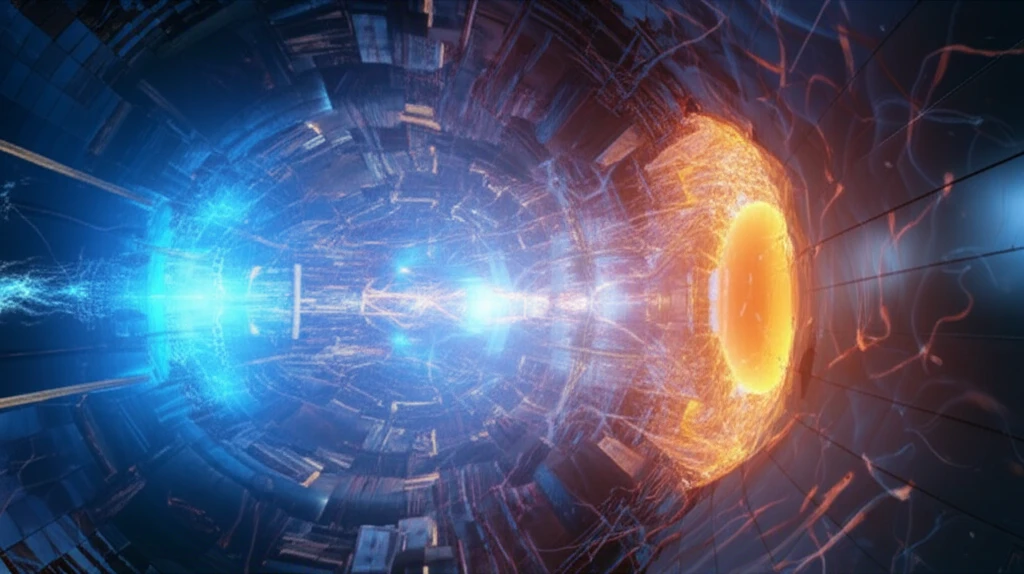
Unlocking Fusion: How Scientists Measure Success at NIF
"Delving into Neutron Measurement Techniques at the National Ignition Facility"
For years, scientists have used activation foils to measure neutron fluence and spectra from various neutron sources. This method involves exposing a material sample to neutrons above a specific energy threshold, which induces nuclear reactions and creates radioactive species. By measuring the decay of these radioactive nuclei, scientists can determine the number of neutrons that passed through the material.
The process involves some math. For an isotropic, instantaneous neutron source, neutron yield (Yn) above a reaction's energy threshold is calculated as: Yn= (4πR²ANe)/(mfBrfaNaϵiϵd(σ)e−λ(Δts)[1−e−λ(Δtc)]) where R is the distance from the neutron source to the activation sample; A is the atomic mass of the isotope; Ne is the number of measured decay particles; m is the sample mass; fBR is the branching ratio; fa is the isotope's abundance; Na is Avogadro's number; ϵi and ϵd are irradiation and detection efficiencies; (σ) is the spectrum-weighted cross section; λ is the decay constant; and Δts and Δtc are time intervals.
At the National Ignition Facility (NIF), measuring neutron yield and implosion areal density variations (ρR(Ω)) requires five different neutron activation diagnostic (NAD) methods, each named for its deployment location: Well-NAD, NAD20, DIM-NAD, Snout-NAD, and Flange-NAD. Indium measures 2.45 MeV neutrons from deuterium-deuterium (D-D) fusion, while zirconium and copper measure 14 MeV neutrons from deuterium-tritium (D-T) reactions. While samples are thick, the term "foil" remains historical.
Well-NAD: Precise Measurement in a Diagnostic Well

The Well-NAD setup involves placing three zirconium foils of varying thicknesses (1 mm, 3.5 mm, and 8.7 mm) inside a diagnostic well on the NIF chamber. This well is located at specific coordinates (θ, φ) = (64,241), with θ = 0° at the top of the chamber. The well's design allows the zirconium to be placed 4.48 meters from the implosion site. This strategic placement minimizes neutron scatter into the foils while remaining outside the chamber's vacuum, simplifying retrieval.
- The 89Zr product subsequently undergoes β+ decay with a 3.27-day half-life, producing 88mY, which emits 909 keV gamma rays.
- These gamma rays are measured using lead-shielded, high-purity germanium detectors in a low-background counting facility.
- Simulations using MCNP6 estimate a 5.7% reduction in sample activation due to absorption in the 1 cm thick well wall and scatter from the surrounding materials (€i in Equation 1), which is accounted for.
Fusion's Future
The utilization of a suite of activation diagnostics has provided high-accuracy, independent measurements of yield along multiple lines-of-sight for relatively minimal cost and effort. Excellent agreement among multiple diagnostics lends high confidence to yield measurements. Significant anisotropies in pR on some shots are being observed by activation foils in multiple locations around the NIF chamber.
